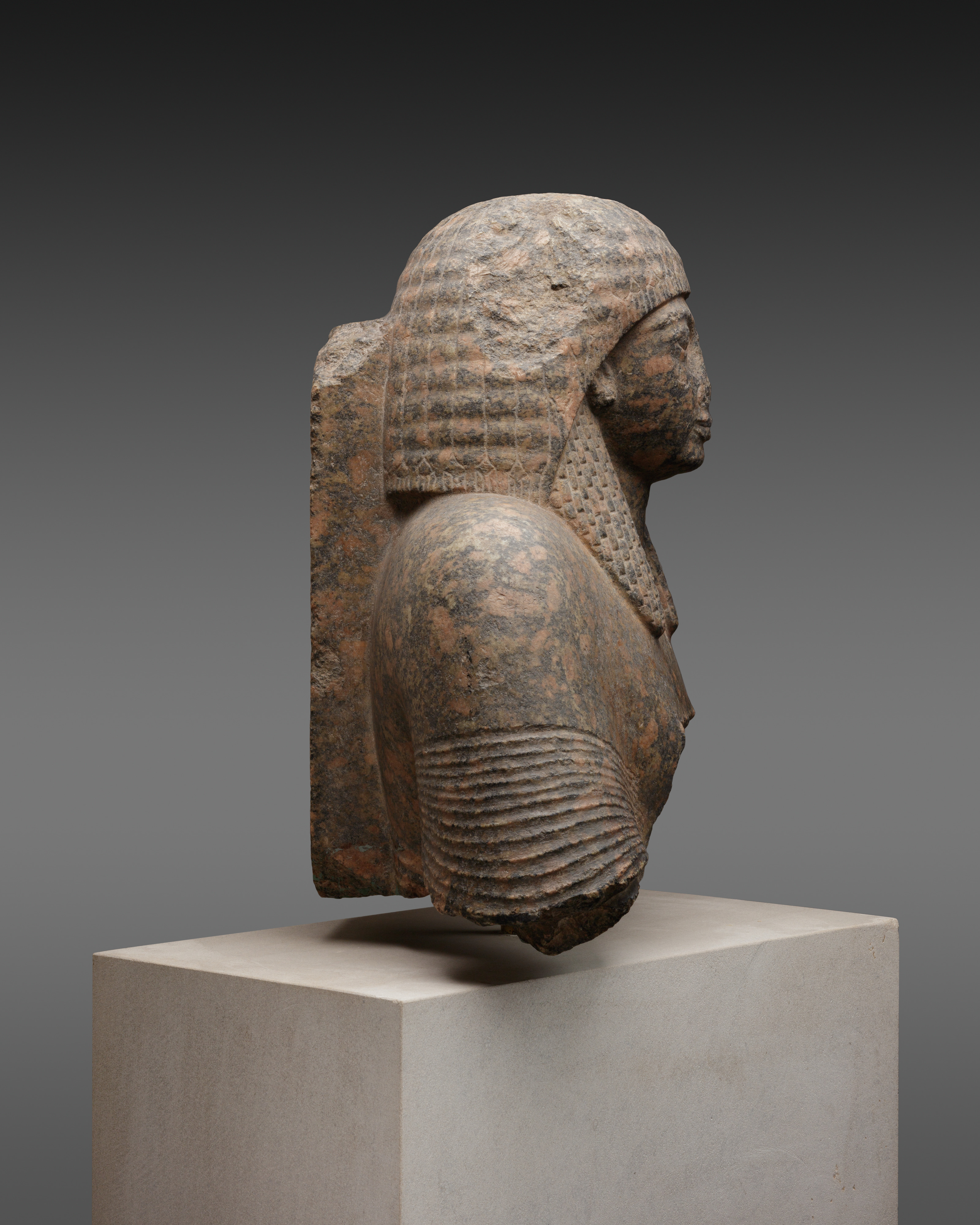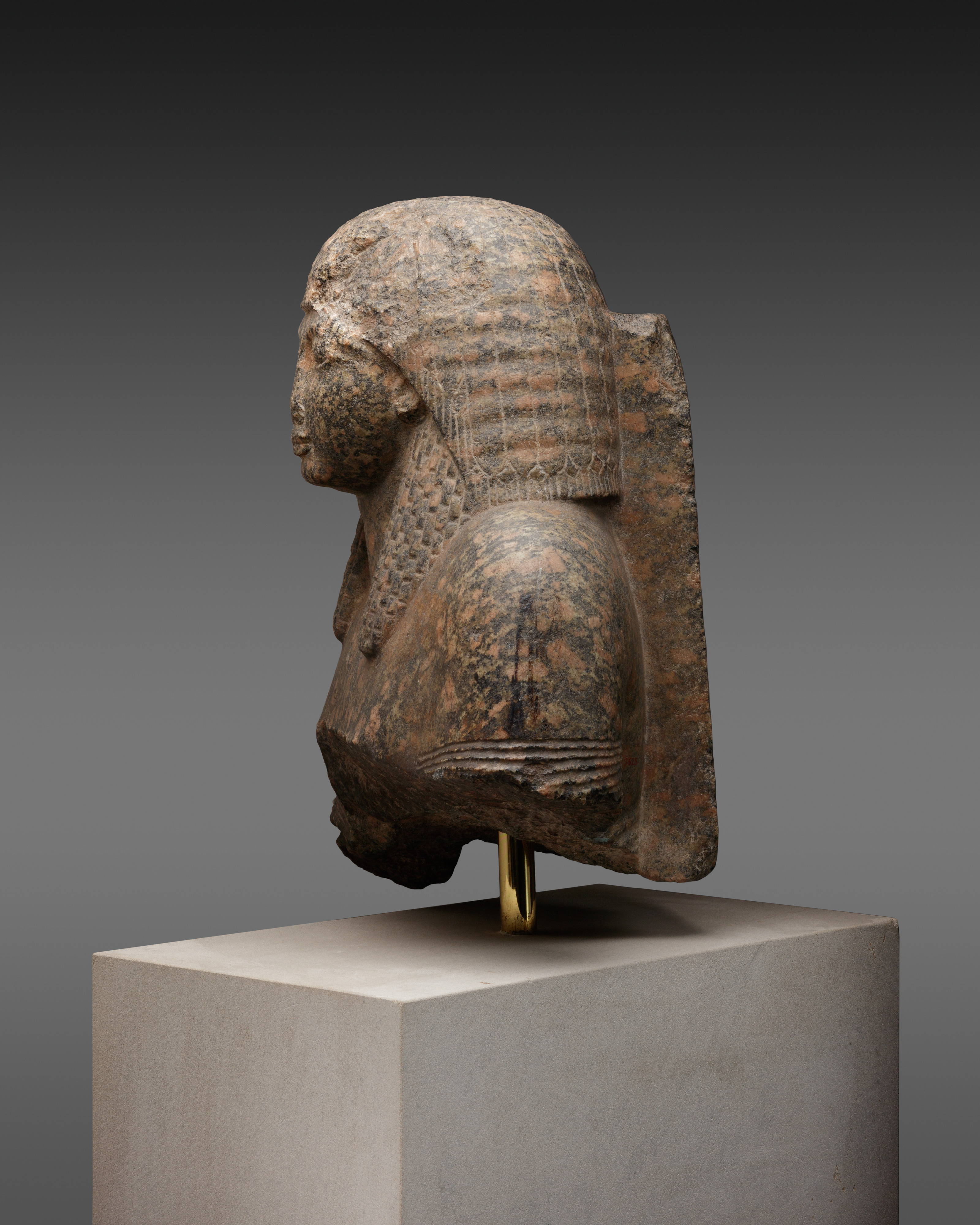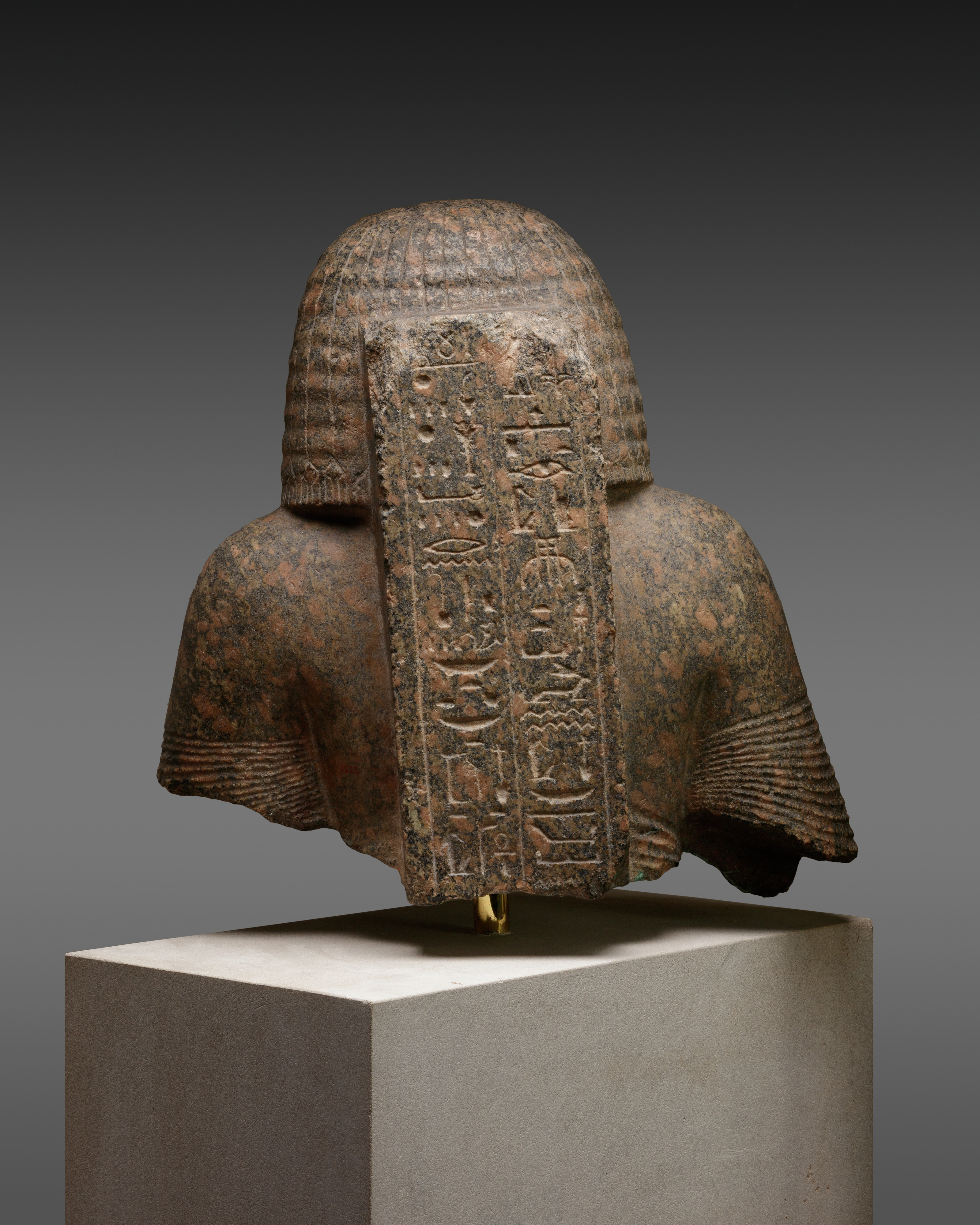Bust of a Naophorous Statue
New Kingdom, Ramesside
When complete, this kneeling statue of an elite man held a shrine, whose upper edge can still be seen across the chest. The man’s broad face, pleated-sleeved garment, and hairstyle—showing echeloned side panels and partially covered ears—date this statue to the Ramesside Period.
Naophoroi—statues that show their patron presenting the image of a deity within a naos (Greek for ‘shrine’) –like this one were found in tomb and mainly temple contexts. First appearing in the Eighteenth Dynasty, they are understood to express their owner’s devotion as well as mutually beneficial protection between the dedicant and the deity. This shrine probably housed an image of the god Osiris, whom the inscription on the back pillar names.
Due to rights restrictions, this image cannot be enlarged, viewed at full screen, or downloaded.
This artwork is meant to be viewed from right to left. Scroll left to view more.





